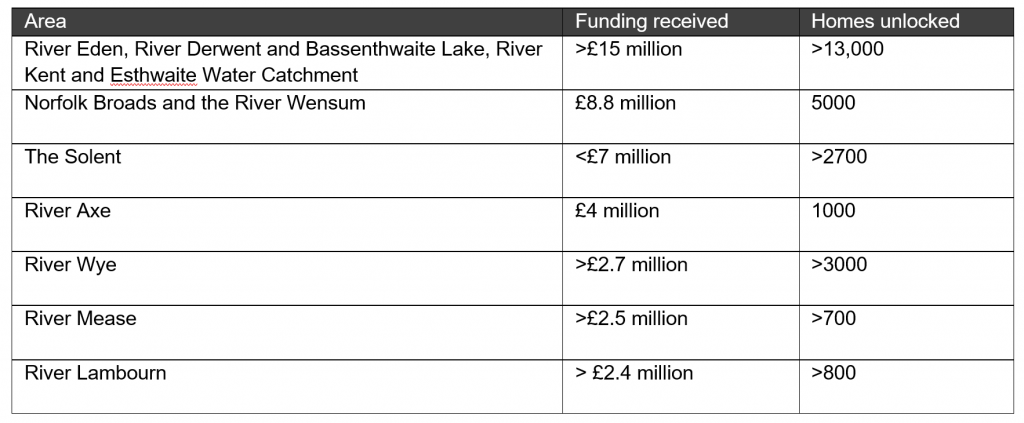The latest funding will unlock an estimated 28,000 new homes across England, whilst protecting the environment and waterways. Seven councils in England will benefit and it marks the first step in the government’s plan to deliver a promised 1.5 million homes.
The funding prioritises locally led nutrient schemes, such as wetland creation and septic tank upgrades. The Local Nutrient Mitigation Fund will enable sustainable development and boost housebuilding across the country.

Seven areas will benefit from a share of £45 million. With a further twenty of the largest sites impacted by nutrient neutrality to receive an additional £100,000 to support planning teams looking to implement pollution solutions across local areas.
“We must build more homes across the country and unlock growth, but this must not come at the expense of our natural environment. Through this fund and alongside major reforms to the planning system, we will accelerate housebuilding and deliver nature recovery, creating a win-win outcome for both the economy and for nature.”
Housing and Planning Minister Matthew Pennycook
The areas to benefit from the funding are:

It appears that developers will be able to start their housing projects and then work out how to deal with phosphate and nitrate pollution along the way.
Protect habitats and clean up water
The message is clear, building the homes we need will not come at the expense of the environment. In July this year, the newly elected Labour Housing Secretary, Angela Rayner, and Environment Secretary, Steve Reed, wrote to nature conservation organisations saying, “nature recovery remains a top priority alongside the need to overhaul the planning system, grow the economy and reach net zero.”
The letter went on to outline how the Ministry of Housing, Communities and Local Government (MHCLG) and Department for Environment, Food and Rural Affairs (DEFRA) would work together in a “more efficient and more strategic way.”
The news was heralded by Natural England Chairman, Tony Juniper who, on BBC Today, said: “If we are serious about achieving nature recovery, we can’t diminish the protections. Hitherto we’ve been looking at individual developments, trying to mitigate for those… whereas if we look at the entire catchment, the levels of pollution going into the rivers and wetlands from all sources, we can get a much better handle on what needs to be done.”
Nutrient neutrality solutions
In most catchments, the main sources of nutrient pollution are agriculture and wastewater treatment works. Agricultural run-off from fertilisers and slurry tanks is already a target, and current wastewater treatment technologies can meet limits of 10 mg N/l total nitrogen and 0.25 mg P/l total phosphorus.
Uprating capacity and/or upgrading of existing municipal treatment works is one way of ensuring nutrient neutrality but, this can be impracticable, costly, or simply too far in the future – the water industry’s capital expenditure programmes could mean a five-year delay or more – then one way to remove uncertainty for new housing developments is by implementing on-site wastewater treatment.
Te-Tech’s te-cycᵀᴹ advanced nutrient removal technology is a small footprint, packaged biological treatment plant which can achieve tighter discharge consents than existing treatment works and represents an ideal permanent solution for on-site treatment at new developments but can also be installed as an interim solution while existing water company assets are improved.
Learn more > https://www.te-tech.co.uk/products/wastewater-treatment-products/te-cyc